Chemistry at ESA now has a legitimate, hands-on Baking Unit! Around the time of my first post, I was brainstorming, collecting, and wrangling ideas & resources to determine an authentic anchor phenomenon to drive the unit. My planning started in August and the overwhelming amount of information (thanks, Internet!) kept me from selecting an entrypoint and lesson structure.
So I backed myself into a corner, telling every possible co-worker, friend and family-member about this amazing baking plan I was definitely going to make happen. Six weeks in advance of the launch date, I emailed an Amazon Wishlist to the school community for equipment. Math for America came through and allowed me to use the “Flex Funds” from my Master Teacher Fellowship to cover additional supplies and ingredients. AND IT WORKED! My brain settled and I developed the following plan:

- Launch Part 1: Cookie Tasting (Data & Variables) Students observed & tasted three chocolate cookie recipes to determine types of qualitative/quantitative data for comparison. The recipes were revealed at the end and they connected observations to variables. (NB: this was an important and delicious first experience but holy moly I was baking for about 8 hours over three nights for one lesson.)
- Launch Part 2: Cookie Baking (Constants / Controls) Groups of students all prepared and followed the same recipe. This was bookended by an introduction to tools and techniques and an analysis of their “results” compared to a few blogs from home bakers. Three groups baked at a time and no three batches ever looked alike. Ingredients were shoddily measured, over- or under-mixed, and accidentally omitted… though ultimately 20 out of 22 groups produced edible cookies. This was bookended by an introduction to tools and techniques and an analysis of their “results” compared to a few blogs from home bakers.
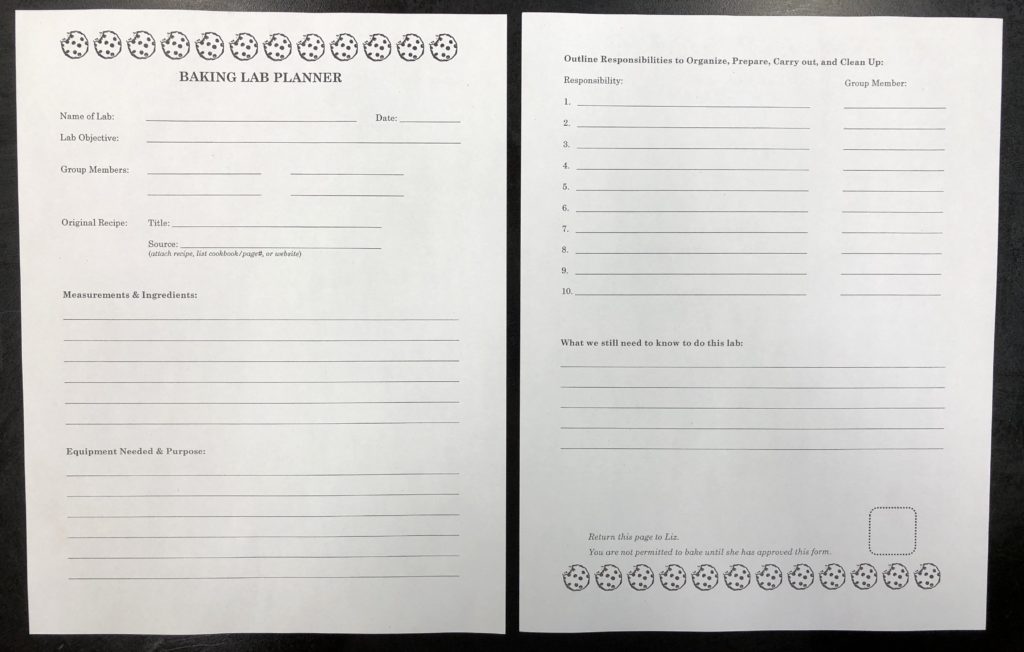
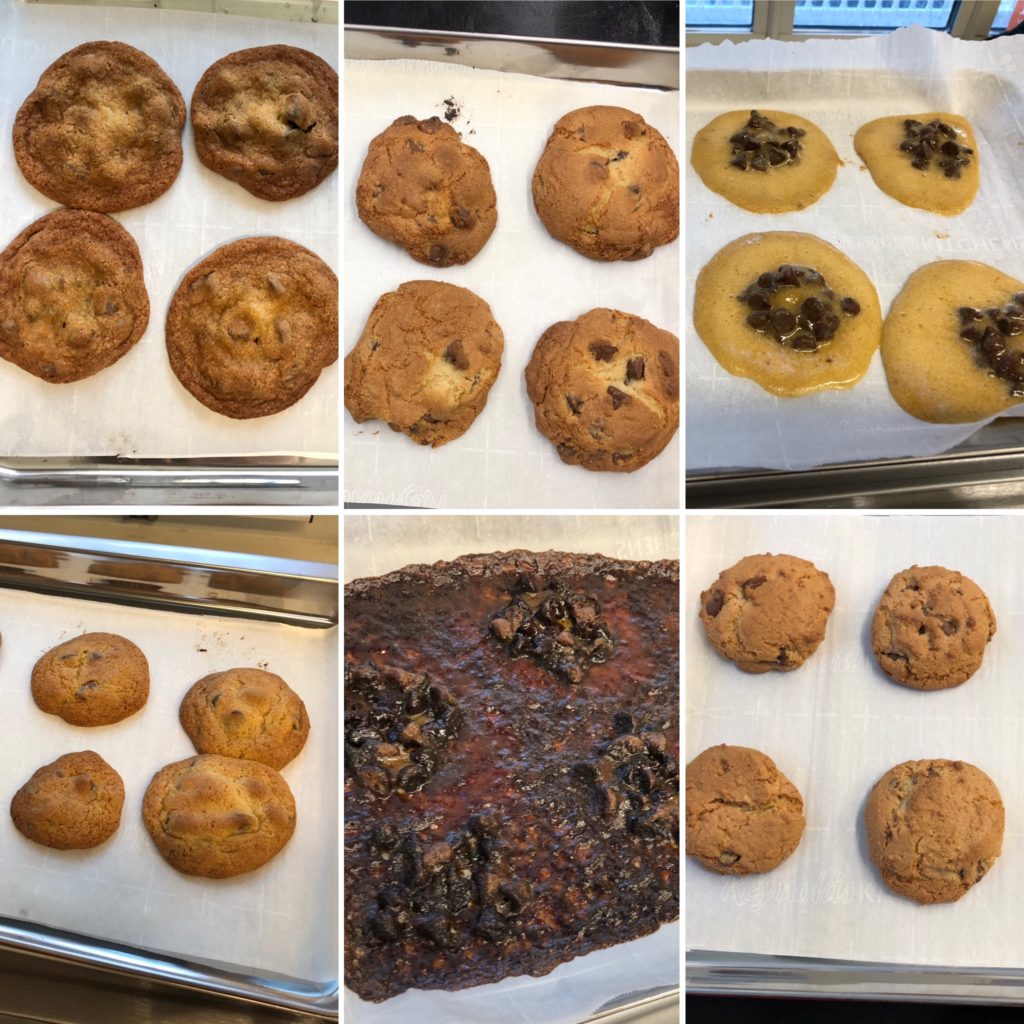
bottom center: flour forgotten altogether…
- Mini-Project: Chocolate To close the semester, students researched different aspects of chocolate science, wrote summary paragraphs and made posters. This mirrored the structures I’ve planned for the core Unit Project. Groups also baked microwave mug cakes for more practice with recipes and instructions. Students presented on the last day of classes, followed by a celebratory chocolate tasting.
- UNIT PROJECT: When the new semester starts, every class will be split into five groups. Each group will (a) research a different ingredient or aspect of baking, including the Chemistry behind it, (b) plan & complete a bake to demonstrate their topic and (c) plan & deliver a 20 minute lesson to teach the class. I’ve built online and hard-copy libraries with leveled resources for each topic in google sheets. I’m still developing check-ins and content-specific tasks each group will complete over the course of the project. THE TOPICS ARE:
- fats (butter, oils, etc)
- proteins (eggs)
- carbohydrates – sweetening (sugar)
- carbohydrates – grains (flour)
- acids & bases (leaveners)
- Final Project: To conclude the unit, small groups (2-3) will optimize at least ONE aspect of the Launch chocolate chip cookie recipe, connecting their new understandings to their planning. They’ll write a complete lab report
HOW DO THE STUDENTS LIKE IT? THEY LOVE IT! (feedback to follow…)
HOW DO I LIKE IT? I’m exhausted but exhilarated. The first half has been lighter on “real” Chemistry content (leading up to the Unit Project) but really rich in other meaningful aspects of scientific thinking. Students are connecting their experiences in class to the importance of experimental design, variables, errors, and planning. In fact, I’m thinking of starting every school year with a baking task from here on out so that students get immediate feedback when they haven’t quite followed instructions.
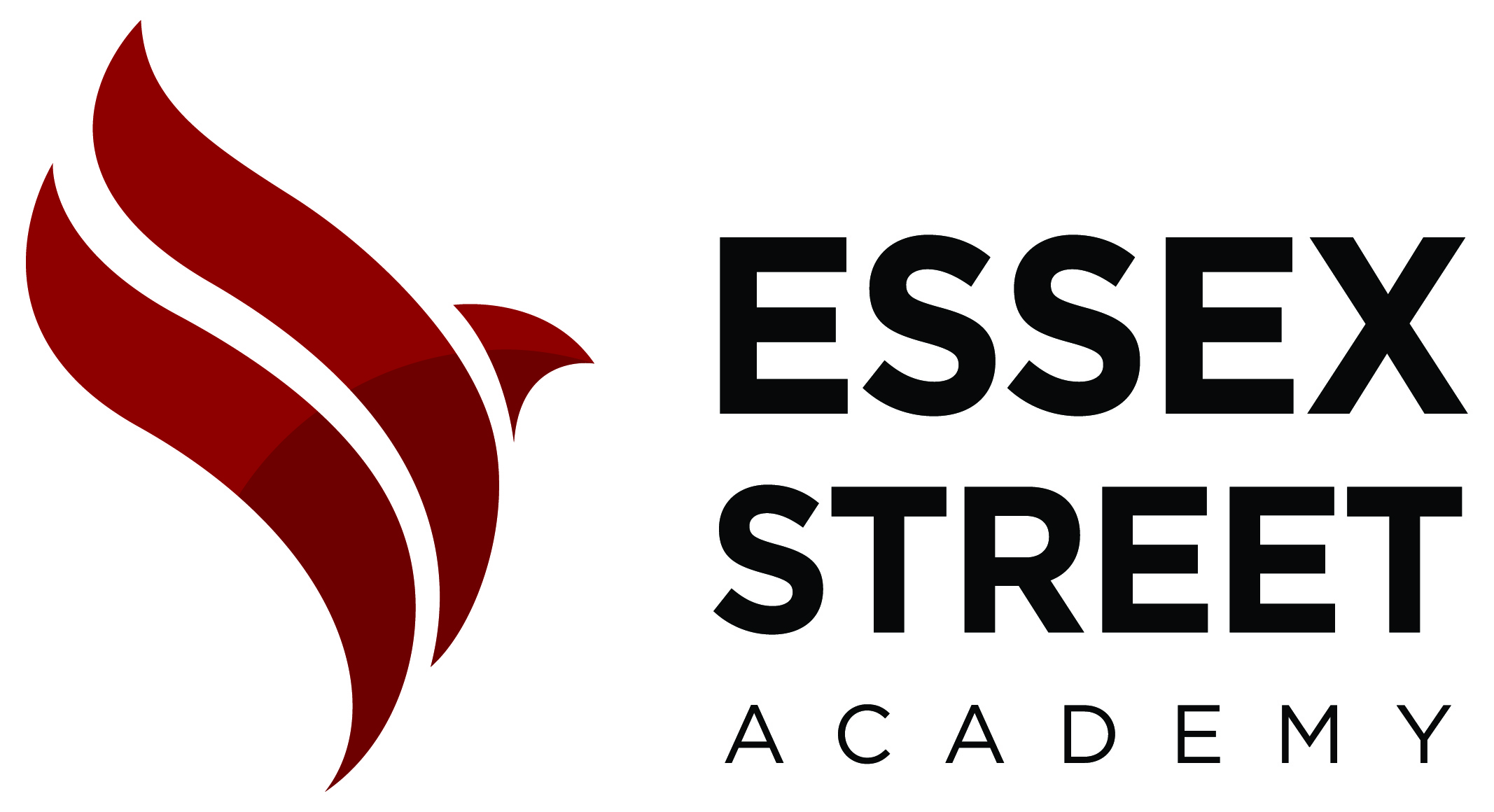
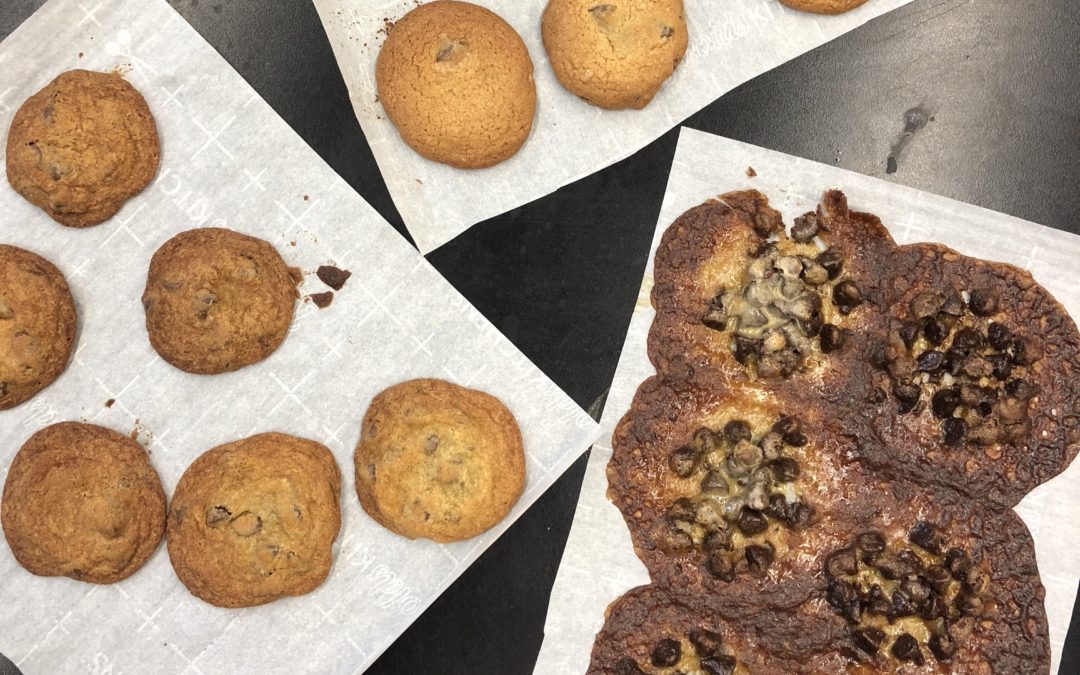
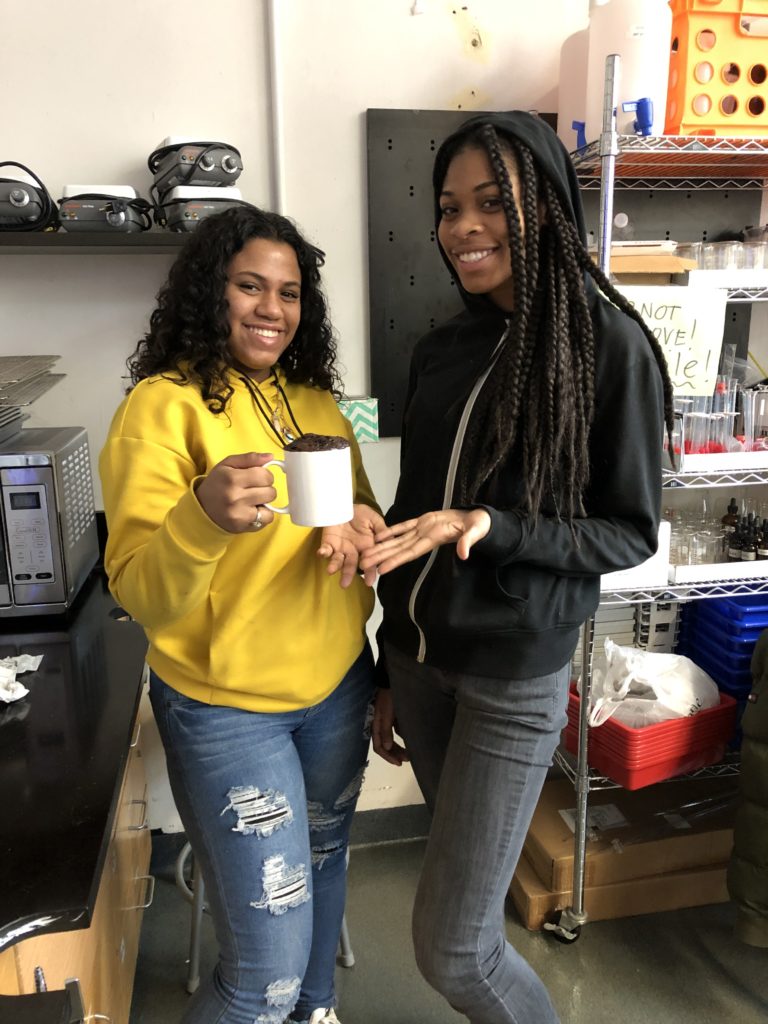
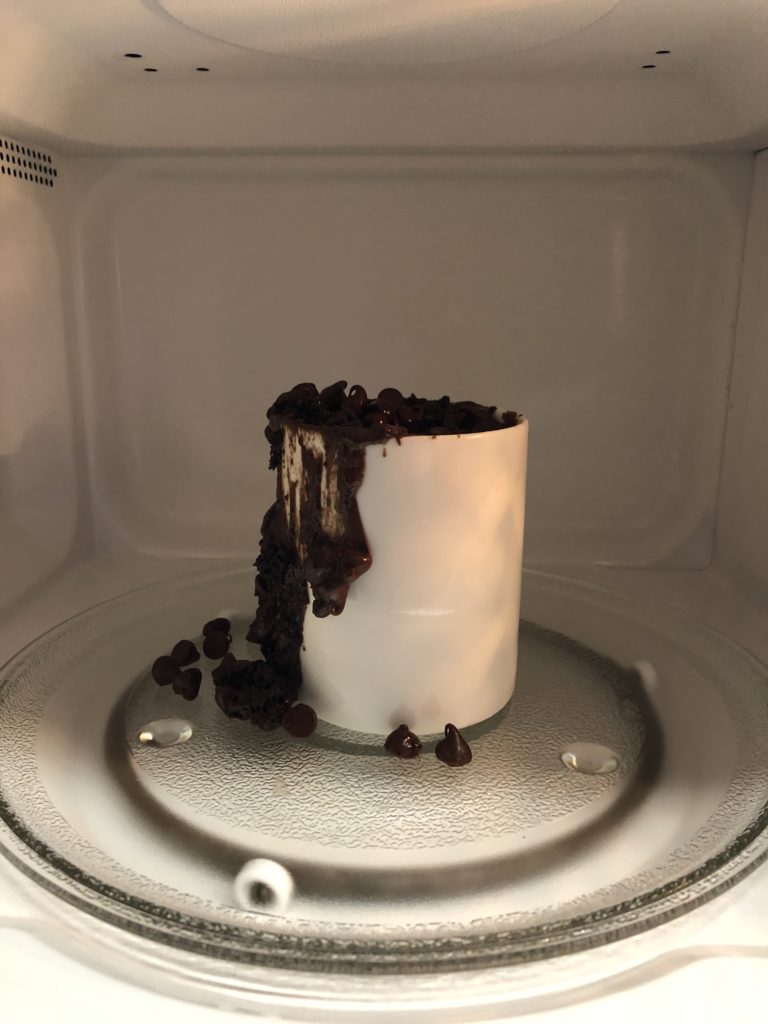
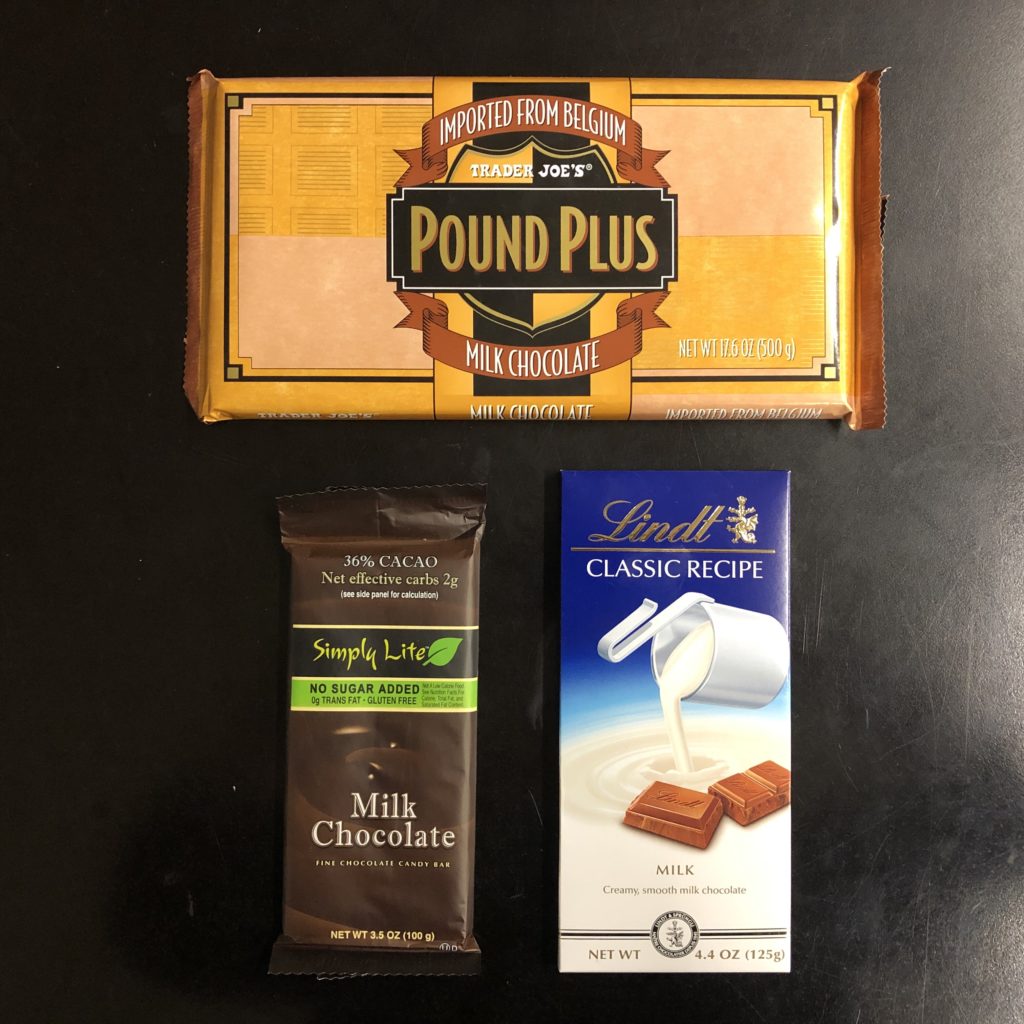
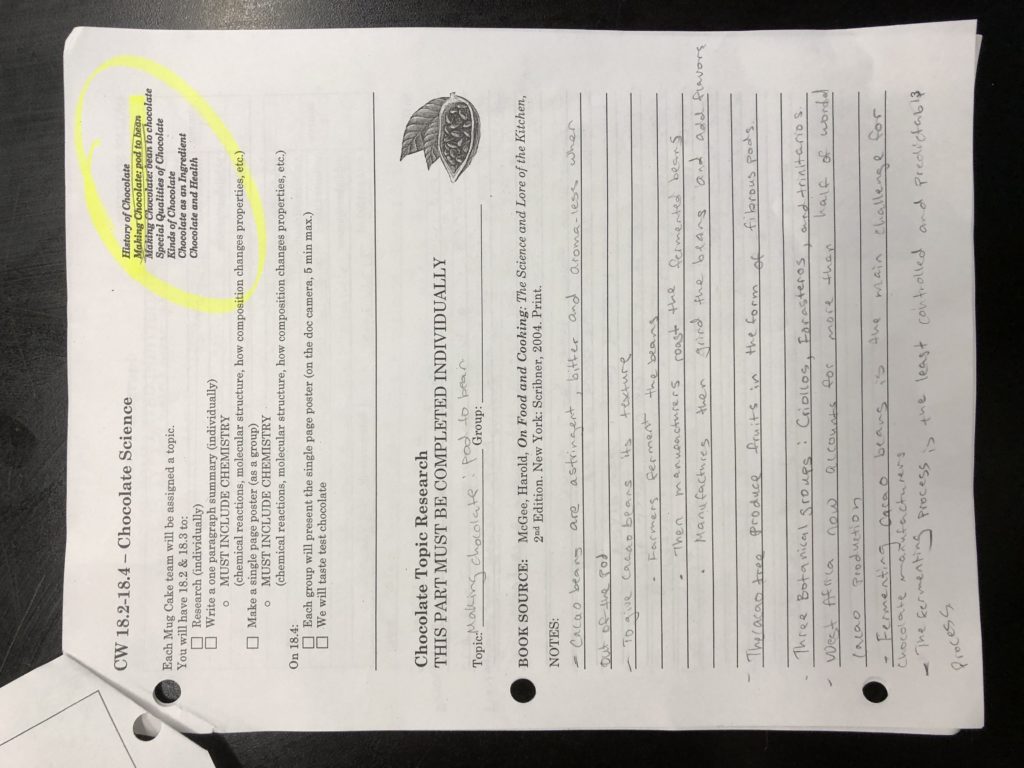
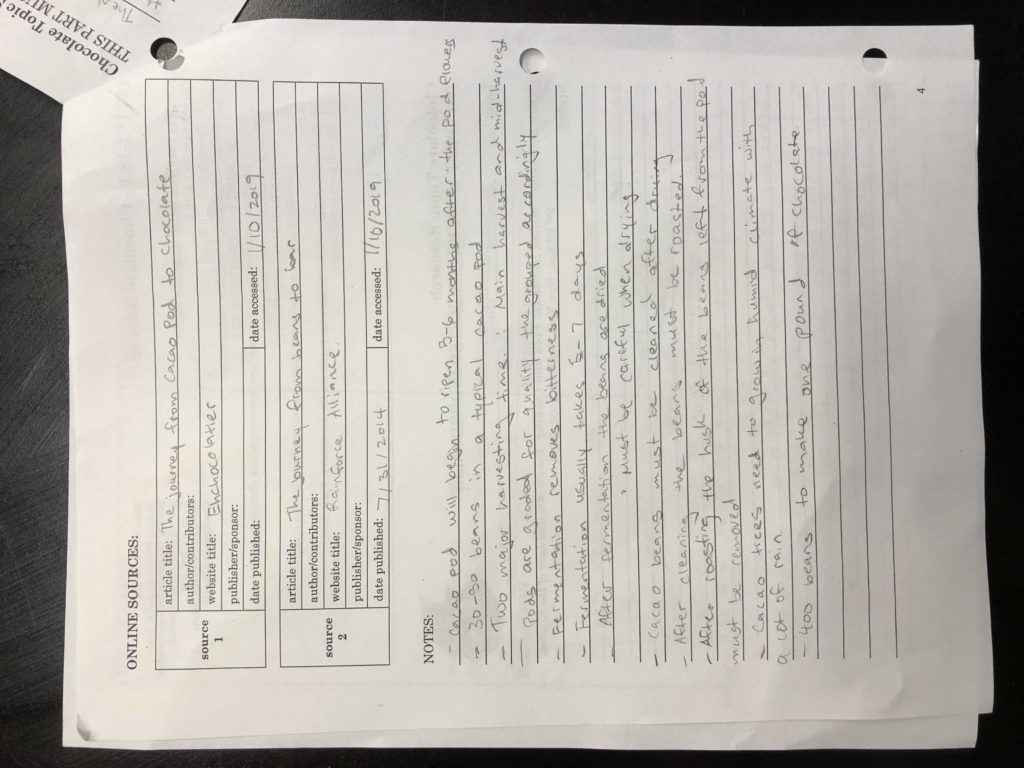
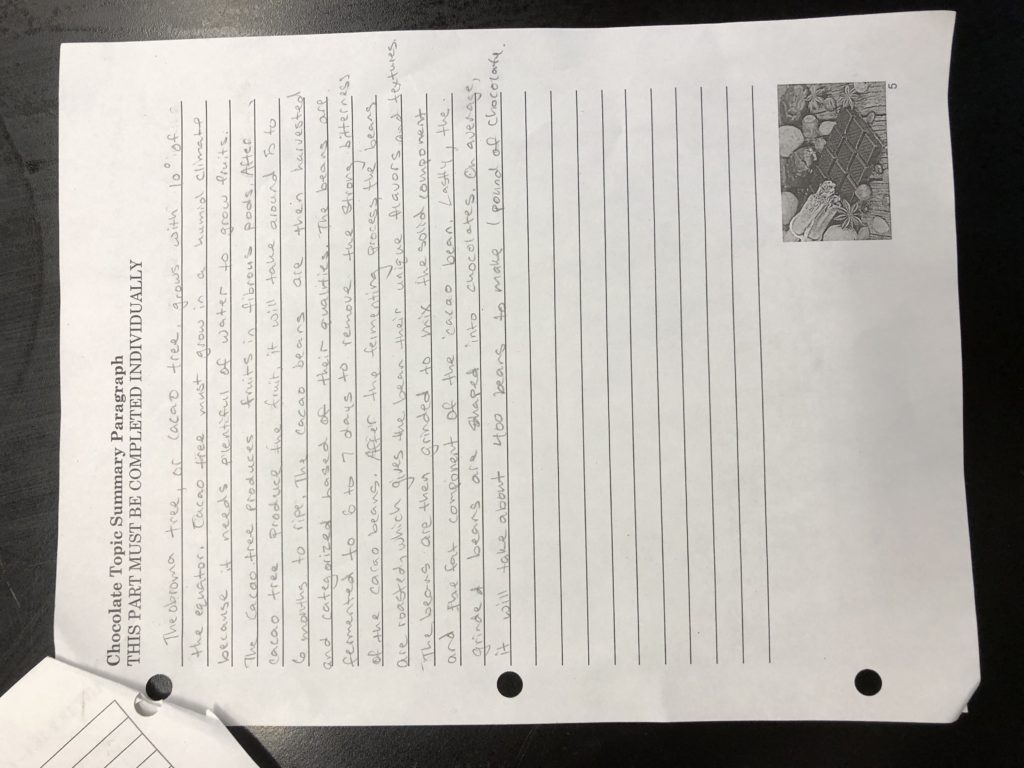
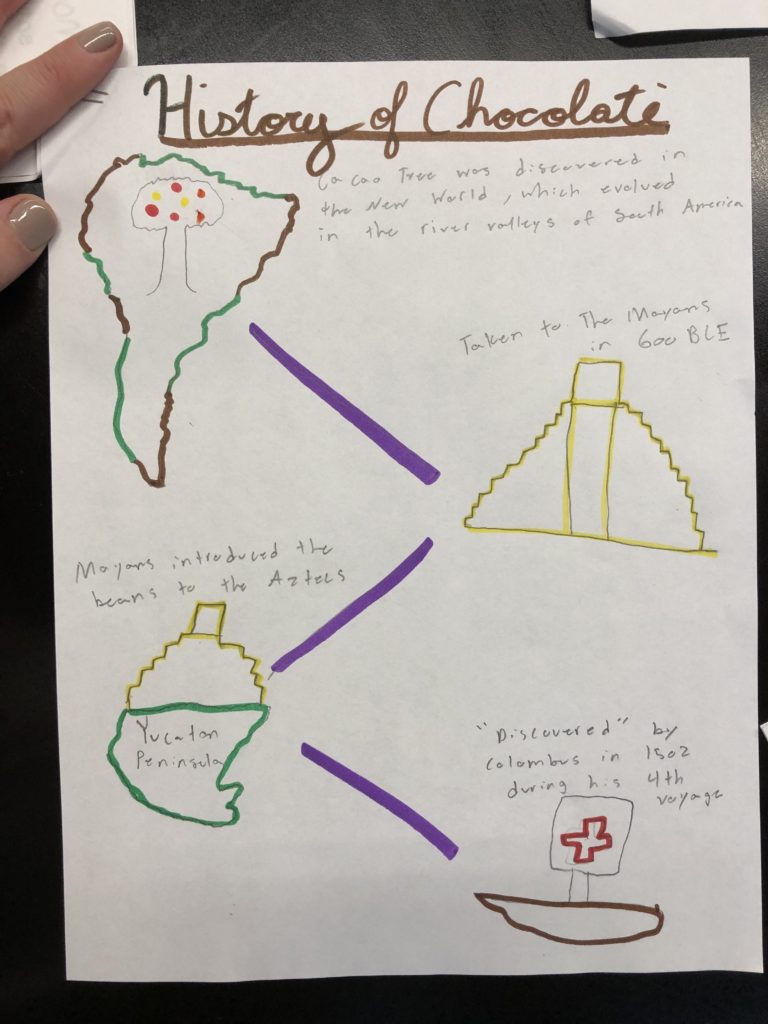
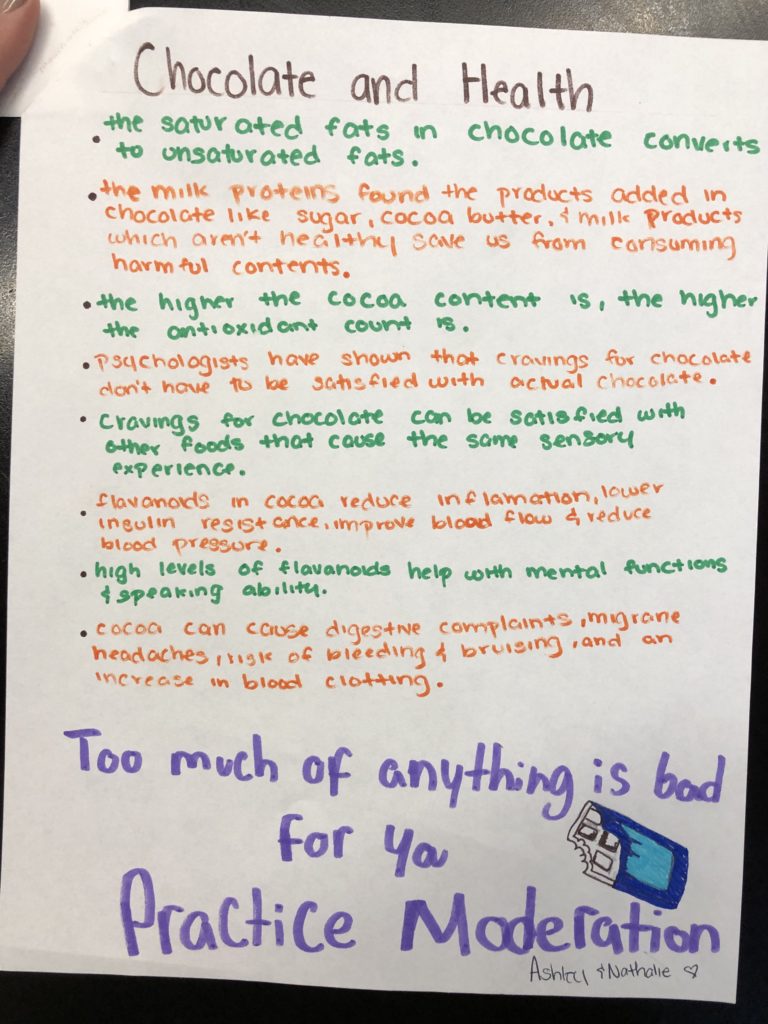
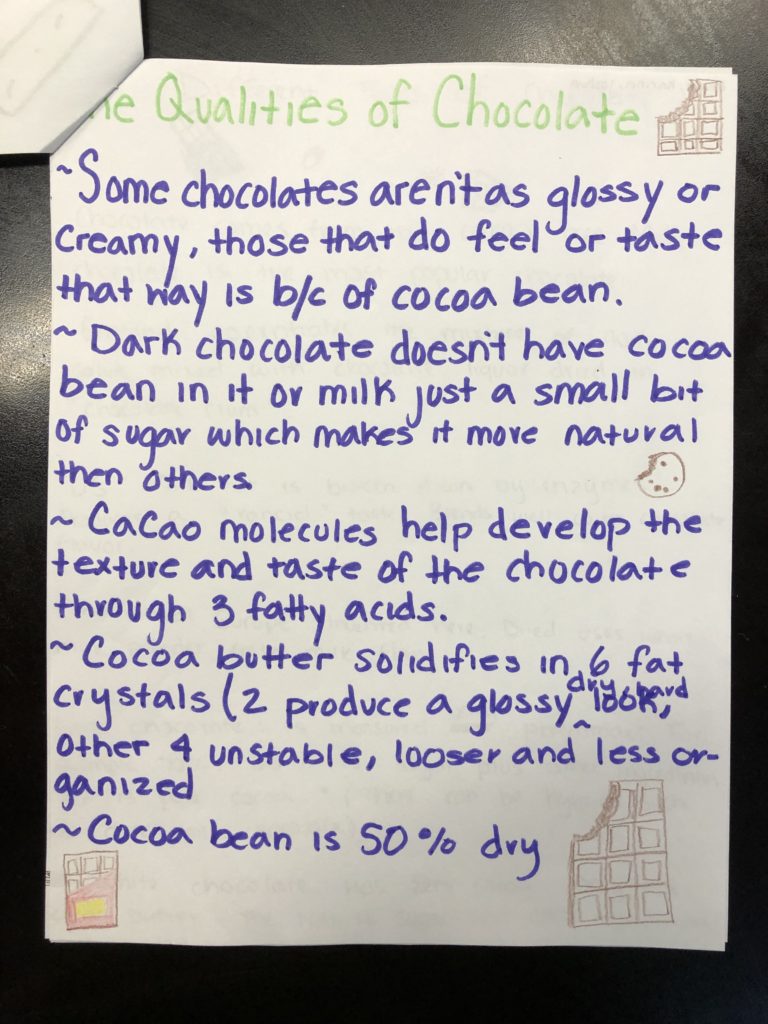
I think there are so many useful and relevant components in this unit. Besides helping teach students the skill (and science, of course) of baking, I’m particularly interested in the cross-curriculum aspect. Having students research the history and health of chocolate in a Chemistry class is unique; it makes me think about ways I can implement other types of “learning” in Microbiology.
I’ve legitimately never seen students so excited for Chemistry before. Not only were they really eager to do stuff with their hands, but seeing the really clear authentic connections to their lives is so meaningful for them. I was equally curious about all of this baking science—I definitely wish I were in your Chem classes!!
I LOVE the immediate, visible feedback that students see from following or not following directions 🙂 but more than just about instructions, baking is such a great way to see the effect of different variables on the outcome of another variable – it really makes the process so transparent and tangible (and delicious) for the students. The scientific approach to baking is something that has been touted in many of my favorite food magazines and blogs and it is wonderful to see students be able to assume the role as the master engineers of the perfect cookie.
I feel like this unit nails the authenticity to discipline strand, so I’m curious about how you could push it further to have students work towards a final product that would have an authentic audience; and also how the project could be made even more personally meaningful and relevant to them and their lives. Although I’m sure most students are loving this unit, what do we do if there are students who aren’t connecting – those maybe who just don’t love baking, are frustrated by the process, or could care less about chocolate and cookies? I certainly am not one of those people and find it hard to believe that there could be students who think otherwise, but I guess you never know!